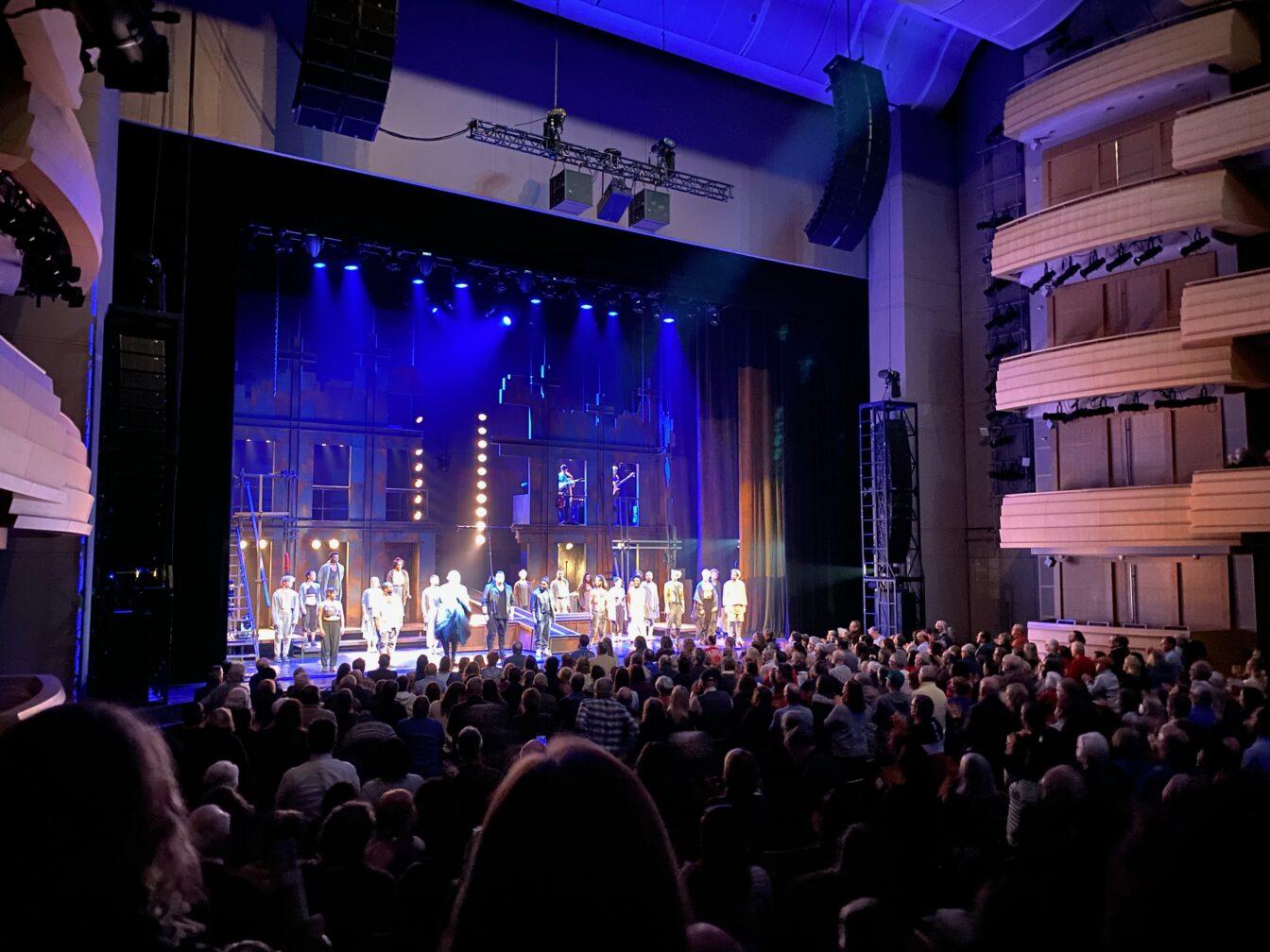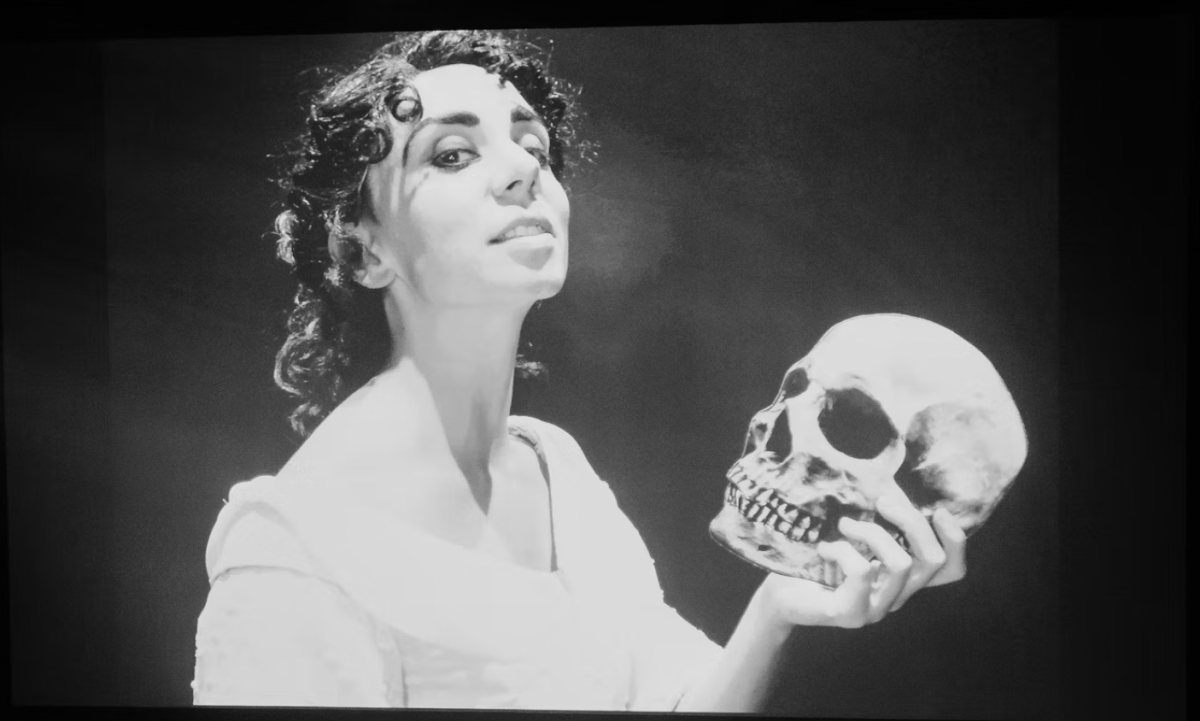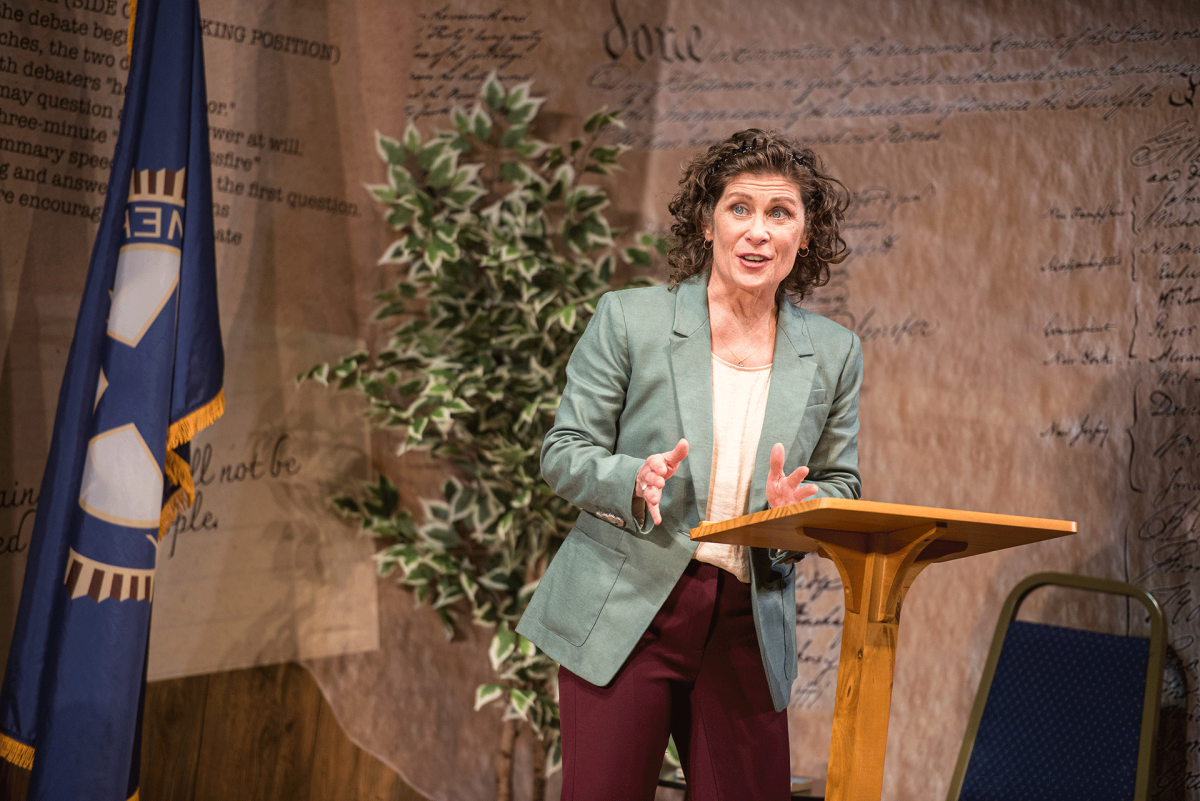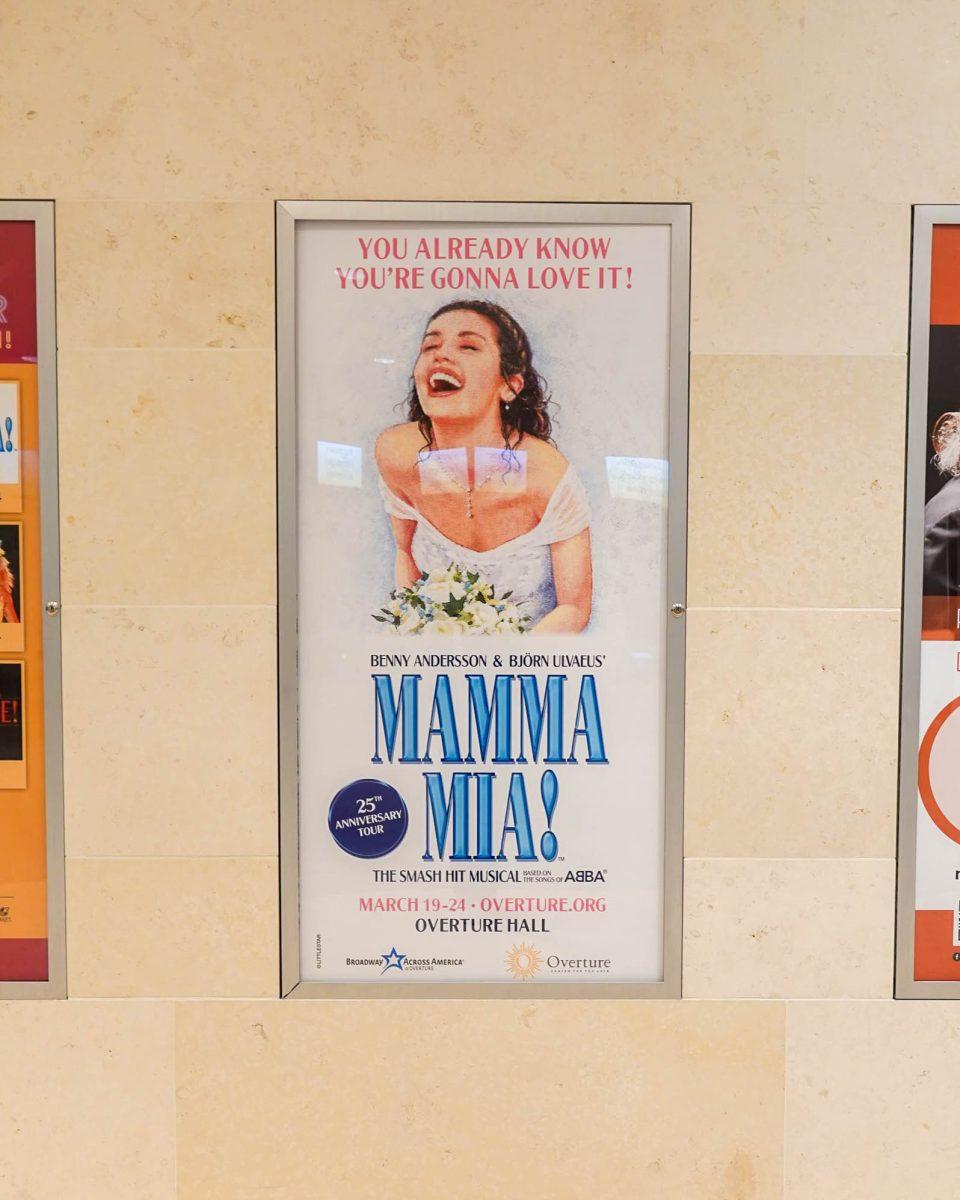The audience settled into their seats at the Overture Center waiting for the production of “Jesus Christ Superstar” to begin. The stage was blocked by a large red curtain with a gray emblem in the middle. When the curtain lifted, an electric guitar riff rang out through the auditorium, and a single spotlight on the musician playing on the second level of the set appeared.
During the opening song, the lights came up onstage and revealed the remainder of the opening set. The design centered around a large, raised cross set upside down at an incline. This set was further supported by the lighting design — from lighted crosses as props to rock-concert-style light shows. The lighting complemented the themes and plot of the musical perfectly.
‘Clap for Credit’: How Music 113 opens UW music department to all students
While there were only a handful of named characters in “Jesus Christ Superstar,” the leads of the show were clearly Judas and Jesus. The story was centered on Judas and Jesus, and the audience followed these characters’ perspectives for the majority of the rock opera. These two roles are incredibly demanding vocally, as the parts require not only an extreme range, but also the ability to blend rock styles with more traditional musical styles of vocal performance.
The standouts for the cast were Elvie Ellis as Judas, Jack Hopewell as Jesus and — my personal favorite — Faith Jones, who played Mary Magdalene. All three performed their highly challenging roles exceptionally, staying true to the original styles of the musical while adding their own interpretations of the material and improving upon the previous iterations of the characters.
Along with the electric guitarist, the rest of the band was also onstage, which was emblematic of their importance to the sung-through musical. The band was made up of a standard pit orchestra for a musical, but with “Jesus Christ Superstar” being a rock opera, the electric, acoustic and bass guitars were by far the most important and used instruments in the show.
In fact, numerous members of the large ensemble played guitars on stage during the show, as well as other instruments such as the triangle, bass drum and tambourine. The incorporation of instruments into the ensemble added to the support the cast provided onstage to the leads. The show featured many large dance numbers, using the ensemble members to fill in any gaps left by the story.
The costuming was another area where the show accomplished a lot with relatively little to work with. The costuming was fairly simple, with everyone starting out in loose, casual, neutral-colored clothing — even the leads. As the show progressed, small changes in the costumes, such as adding or removing color or incorporating glitter, were very effective in contextualizing the action on stage.
It must be noted that the show does take some pretty significant liberties with the characterizations of Jesus and his Apostles, deviating from traditional interpretations.
The only significant critique I had when watching the show was that the show suffers from a common pitfall in musical theater — the lyrics were occasionally hard to make out, making the story slightly hard to follow since the musical is entirely sung-through.
The rock aspects of the show definitely contributed to this issue, as the gritty electric guitar sounds and the stylistic shout-singing drowned out the actual words. Because of this, many of the best parts of the musical were the slower, acoustic songs in which a character would be singing mostly on their own accompanied by an acoustic guitar.
As a whole, “Jesus Christ Superstar” was expertly performed and executed — a fantastic way to spend a Tuesday night.













